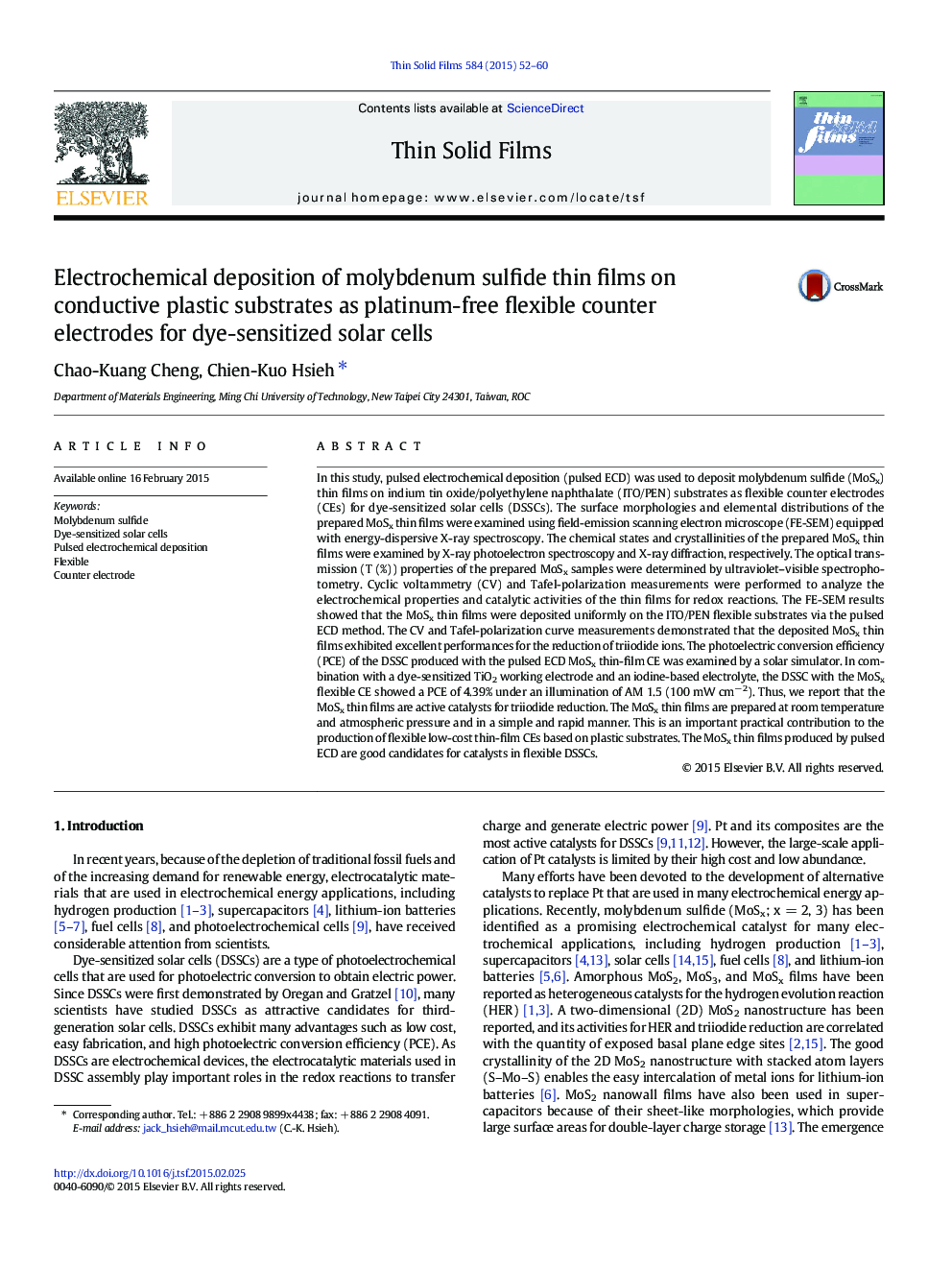| کد مقاله | کد نشریه | سال انتشار | مقاله انگلیسی | نسخه تمام متن |
|---|---|---|---|---|
| 1664824 | 1518021 | 2015 | 9 صفحه PDF | دانلود رایگان |
• We used indium tin oxide/polyethylene naphthalate (ITO/PEN) as a substrate.
• Molybdenum sulfide (MoSx) thin films were deposited on ITO/PEN.
• We used electrochemical deposition to deposit MoSx thin films on ITO/PEN.
• The MoSx/ITO/PEN was used as a flexible counter electrode (CE) for DSSCs.
• The DSSC with MoSx/ITO/PEN CE showed a photoelectric conversion efficiency of 4.39%.
In this study, pulsed electrochemical deposition (pulsed ECD) was used to deposit molybdenum sulfide (MoSx) thin films on indium tin oxide/polyethylene naphthalate (ITO/PEN) substrates as flexible counter electrodes (CEs) for dye-sensitized solar cells (DSSCs). The surface morphologies and elemental distributions of the prepared MoSx thin films were examined using field-emission scanning electron microscope (FE-SEM) equipped with energy-dispersive X-ray spectroscopy. The chemical states and crystallinities of the prepared MoSx thin films were examined by X-ray photoelectron spectroscopy and X-ray diffraction, respectively. The optical transmission (T (%)) properties of the prepared MoSx samples were determined by ultraviolet–visible spectrophotometry. Cyclic voltammetry (CV) and Tafel-polarization measurements were performed to analyze the electrochemical properties and catalytic activities of the thin films for redox reactions. The FE-SEM results showed that the MoSx thin films were deposited uniformly on the ITO/PEN flexible substrates via the pulsed ECD method. The CV and Tafel-polarization curve measurements demonstrated that the deposited MoSx thin films exhibited excellent performances for the reduction of triiodide ions. The photoelectric conversion efficiency (PCE) of the DSSC produced with the pulsed ECD MoSx thin-film CE was examined by a solar simulator. In combination with a dye-sensitized TiO2 working electrode and an iodine-based electrolyte, the DSSC with the MoSx flexible CE showed a PCE of 4.39% under an illumination of AM 1.5 (100 mW cm− 2). Thus, we report that the MoSx thin films are active catalysts for triiodide reduction. The MoSx thin films are prepared at room temperature and atmospheric pressure and in a simple and rapid manner. This is an important practical contribution to the production of flexible low-cost thin-film CEs based on plastic substrates. The MoSx thin films produced by pulsed ECD are good candidates for catalysts in flexible DSSCs.
Journal: Thin Solid Films - Volume 584, 1 June 2015, Pages 52–60
